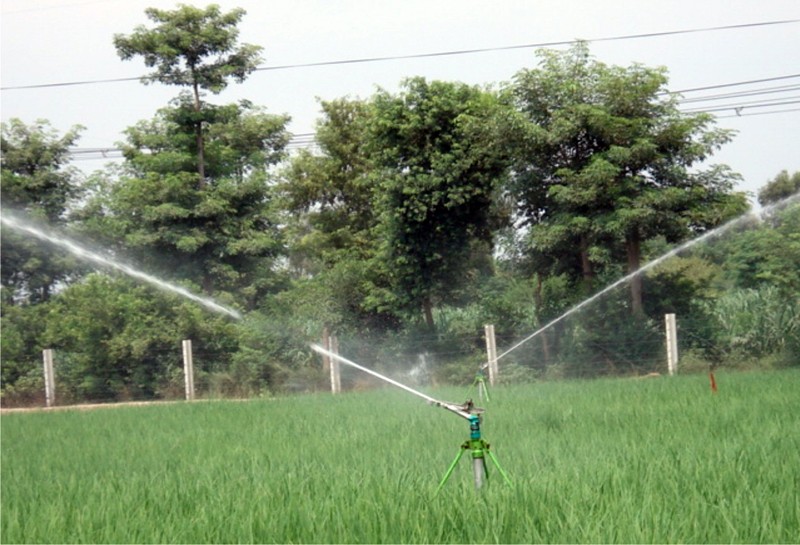
The agriculture sector will have to adapt to the changing climate patterns fast

Climate change has become a great challenge to the agriculture sector of Pakistan, which contributes 21 per cent to the country’s GDP, employs 44 per cent of total work force and 65 per cent of exports.
The 2010 floods in Pakistan, which according to experts, were a manifestation of climate change caused an overall loss of Rs 855 billion to the country’s economy with the agriculture sector alone, suffering a loss of Rs 429 billion (50 per cent of the total loss).
"The extreme climate events in recent years have taken a heavy toll on the crop output and have also exposed the vulnerability of agriculture sector of Pakistan," says Dr Muhammad Azeem, a senior official of Pakistan Agriculture Research Council.
"The rise in temperature dries up the soil and increases water requirement of crops. It also directly affects the productivity of major crops, wheat and rice, vegetables and fruits. Some studies have found that one centigrade increase in temperature would reduce wheat yield by 5-7 per cent in Pakistan," he says, adding, "Regular irregularity in rainfall poses even more serious threats to the crops."
Organisations working with communities say small farmers are the worst hit. "Their capacity to cope with the situating and adapt new technologies is limited," says Shafqat Aziz of Oxfam Novib, an INGO working with small farming communities in Sindh and South Punjab. "In coastal areas, sea water erosion has been causing a serious threat to the livelihood of several small farmers. They have been facing more cyclones and thunderstorms."
The situation in South Punjab is different but has almost a similar toll on the farming communities. "They have been witnessing the regular irregularity of precipitation and temperature changes. People witnessed the latest hailstorm in the area during the flowering stage of mango plants," he says.
According to Aziz, Pakistan needs to have agriculture research institutes at sub-region level to fight climate change. "It needs adaptations like changing cropping patterns or timing of sowing or reaping of certain crops in certain areas after local level research."
A 2015 World Wildlife Fund for Nature-Pakistan (WWF-Pakistan) study, "Climate Change Adaptation in the Indus Eco-region" finds that in 25 year’s time, productivity of land will reduce by 8-10 per cent or up to Rs 30,000 per acre in Punjab and Sindh owing to climate change.
The study also suggests that for every 1 per cent increase to agriculture production, an additional 0.47 billion cubic metre of water is required. The study terms Punjab more resilient to climate change owing to extensive canal irrigation system and around one million tube wells extracting ground water for irrigation purposes.
A few weeks ago NASA issued satellite data of the world’s underground aquifers that showed that the aquifer in the Indus basin is the second most stressed in the world. A new IMF report rates Pakistan as the third most water-stressed country in the world. Its per capita annual water availability is 1,017 cubic metres.
Agriculture sector in the country uses 90 per cent of water.
Experts say global warming will have serious implications for the country as more water will be available in the first few decades, causing floods and extreme shortage of water later. "Water storage in big quantity can help to some extent to avoid severe implications of climate change to the agriculture sector," says Dr Munir Ahmed, joint director/head, Agriculture and Environment, Pakistan Institute of Development Economics (PIDE).
Read also: Ready for the change?
Pakistan is among the countries with least water storage capacity as its total dam storage constitutes only 30 days of average demand while India stores water for 220 days. Ahmed says that overall rainfall in the country is on the increase but we are seeing intense rainfalls and shorter durations.
In India under the Integrated Agromet Advisory Services (IAAS, started in 2007) authorities have been sending such advisory to more than three million farmers and planning to extend them to 10 million farmers in coming days.
A 2010 report by India’s National Council for Applied Economic Research (NCAER) estimated the economic benefits of such advisories, then reaching only 24 per cent of India’s farmers, at USD 50 billion annually.
The authorities at Pakistan Meteorological Department have also set up a National Agromet Centre and it also has weather forecast centres at the district level but there is no programme in place to properly disseminate this information.
"Agromet can be our answer to climate change. We produce short (one day), medium (7-10 days) and longer (monthly) advisories for farmers," says Muhammad Aslam, a senior official of Agromet Centre. "Most of the advisories are in English language with some portion in Urdu language and they are disseminated to all ministries and departments related to agriculture."
"We have a success rate of between 60-70 per cent in summer because climate change makes it difficult to predict," he says.
A senior official of the federal ministry of food security says that total allocation for the development funds in agriculture sector at federal level is Rs 1.5 billion for next fiscal year. "This includes budget for all allied departments and research institutes. There is hardly a penny left for conducting research on climate change. Pakistan spends only 0.2 percent of its GDP on agriculture research."
Javed Iqbal, a farmer and climate change activist based in Layyah says "Climate change has not been part of any planning at the district level," he says.
"We need messages in local languages. This year we had been expecting bumper grain crop but the last minute rains destroyed most of the crop. If people had the information, they might have reaped the crop earlier."